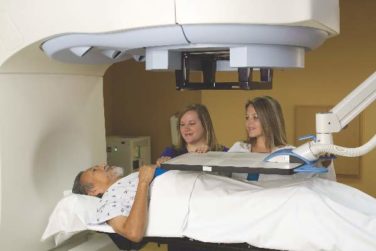EXPERT ANALYSIS FROM THE APA ANNUAL MEETING
TORONTO (FRONTLINE MEDICAL NEWS) – Efforts to prevent suicide contagion in the community are targeted wrongly, Dr. Robert Michels said at the annual meeting of the American Psychiatric Association. Rather than target those at risk for suicide contagion – those with mental illness – precious resources are used to “soothe” individuals who are not at risk for suicide.
“The suicidality that occurs after a publicly known suicide event is most adequately dealt with in terms of the use of scarce resources – not by providing hotlines and suicide assistance programs – but rather by providing adequate care for the mentally ill in the community,” Dr. Michels said during a session addressing the issue of suicide from different perspectives.
Soothing or prevention?
Most suicides – up to 90% of them – are committed by individuals with preexisting mental illness. But when a prominent suicide occurs in the community, resources are spent largely on soothing the larger population, which has no or minimal risk of suicide.
“We know that if there is a suicide event, the most important thing we can do in preventing true cluster phenomenon is to find those who are at risk and provide them with good treatment for their psychopathology,” said Dr. Michels, the Walsh McDermott University Professor of Medicine at Cornell University in New York, and University Professor of Psychiatry at Weill Medical College at the university. “A common response to suicides is to provide social support and soothing for the general population, a largely worthless process in terms of suicide prevention, and one that some have suggested may even cause some suicides.”
A suicide cluster is defined as multiple suicidal behaviors or suicides that fall within an accelerated time frame, and sometimes within a defined geographic area. Suicide contagion is particularly a concern among adolescents who are often considered the most vulnerable to this phenomenon. Suicide clustering is a matter of some debate, as is the role of the media in it.
“The best treatment to prevent suicide is to treat those mental illnesses that have suicide as a common and expected sequelae of them, not by preventing the suicidal act late in the course of the illness or by blocking out the precipitants that may lead to the event, but rather by treating the underlying predisposing disorder and therefore changing the course of the illness,” Dr. Michels said.
He described the “typical situation,” where there has been a completed suicide in a high school, and mental health professionals go into the school to provide group sessions for all the students “to comfort and soothe them from their pain and distress.” However, the “great majority of those students are not at risk at all,” said Dr. Michels. “They may profit from the soothing, and it may be a humane thing to do, but the students who are at risk are the ones who are heavy substance abusers, who are depressed, or who have some other premorbid condition.”
The preferred response would be to use scarce resources to provide better mental health services to the vulnerable, rather than to soothe the sad. “When an event occurs that makes the vulnerable victims, we soothe the victims’ families and friends but what we ought to do is take those resources and help the vulnerable,” he said.
Educating the public
Publicly known suicides often have an important impact on the general population, which obligates the mental health community to react to them properly and effectively, Dr. Michels said.
“We know the huge role of psychopathology in the cause of suicide,” said Dr. Michels. “We know that depression, psychotic illness, or substance abuse are found in 90% of people who commit suicide, but the public isn’t fully aware of this, and therefore the public embraces the atypical stories of the suicide that grows out of a meaningful life situation in the absence of depression or psychosis or substance abuse.”
It’s up to the mental health community to better educate the public about the strong link between mental illness and suicide, he said.
At the end of the scheduled talks, participants were invited to join in a 45-minute group question-and-answer session that touched on the many ways suicide affects the community, including mental health professionals. In response to comments on the suicide of Robin Williams and on the suicide/murder of the Germanwings copilot, Dr. Michels again called on the mental health profession to lead the way in educating the public.
“I think there is a reasonable concern about misleading the public to think that there is a link between a suicide event and mass murder,” he said. “There is a very thin link in that mass murderers sometimes also kill themselves, but we wouldn’t want to stigmatize further the vast majority of people who kill themselves or try to kill themselves who aren’t murderers, in the same way we have to be careful about the fact that mass murderers are often mentally ill.
“Many in the public have the idea that mental illness is a risk factor for mass murder, which it isn’t, so we have to be careful about how we approach that subject, not to further encourage false beliefs in the public about the corollaries of mental illness.”
Dr. Michels is past president of the American Board of Psychiatry and Neurology, and the American College of Psychiatrists, and is a former member of the Board on Mental Health and Behavioral Medicine of the National Academy of Sciences, Institute of Medicine. He had no disclosures.




